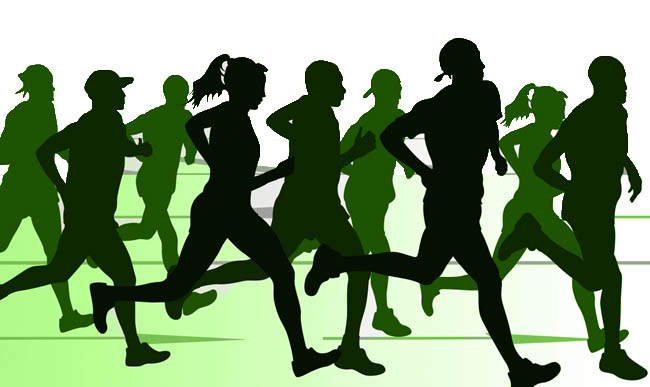Why You Should Run
Running is one of the best ways anyone can burn fat, strengthen muscles, improve posture, and receive a variety of other benefits. For many of us, however, the idea of gearing up, leaving the comforts of our beds and hitting the road/treadmill is an idea that inspires dread. As a runner I can personally guarantee you that on your crummiest day, if you give that extra little push and start running, the way you feel afterwards will completely improve your day.
Everyone has heard of the runner’s high. It is the release of endorphins that make you feel giddy after a nice run. For me, this feeling of invincibility kicks in after mile three, but everyone’s body is different and the high may kick in sooner or later. Besides improving your mood and making you feel good, there are a lot of other physical benefits that running does for you.
Muscle Tone:
Lean legs and a strong core are some of the few things you can look forward to when you start running as a habit. By burning off your excess fat you reveal the firm muscle underneath, as well as building muscle through this full body workout. By activating your core and back through running, you effectively strengthen the muscles that aid with good posture.
Heart Health:
Cardio is one the best things that you can do for your heart. The American Heart Association recommends 150 minutes per week of moderate exercise or 75 minutes per week of vigorous exercise to improve overall cardiovascular health. This is especially important for people with a medical history of /or genetic propensity towards high blood pressure and cholesterol. For lowering blood pressure and cholesterol, the AHA further modifies the recommended aerobic activity levels to an average of 40 minutes of moderate-to-vigorous intensity aerobic activity at least 3 or 4 times per week.
.jpg)
Weight Loss:
Running burns about 100 calories per mile (though the actual number varies depending on your gender, age and weight). At this rate, you can burn up to 800 calories per hour depending on your pace. For those of you who don’t like the idea of long distance hauls, simply aim for at least 20 minutes per day, or opt for rapid interval training. Studies show that a series of sprints with breaks in between can be as effective in revving up your heart rate.
Joint Health:
This part ties in with weight loss. Shedding weight reduces pressure on your knees, hips, and back and helps prevent joint injury. Research has shown that with every pound gained, a person puts four times more stress on the knees. Keeping your weight down could be the best way to protect your joints as you age.

The next time you decide not to hit the trails for whatever excuse there may be, remember that you’re only letting yourself down in the long term. Push yourself past that initial mental block and allow your body to reward you. You won’t regret it!
By Destiny Kanu

